BOZAR, the Centre for Fine Arts Brussels, is hosting a major retrospective of the legendary American artist, Keith Haring. Haring was a unique figure in New York during the 1980s who’s seemingly spontaneous style is instantly recognisable thanks to iconic motifs such as his barking dogs, crawling babies and flying saucers.
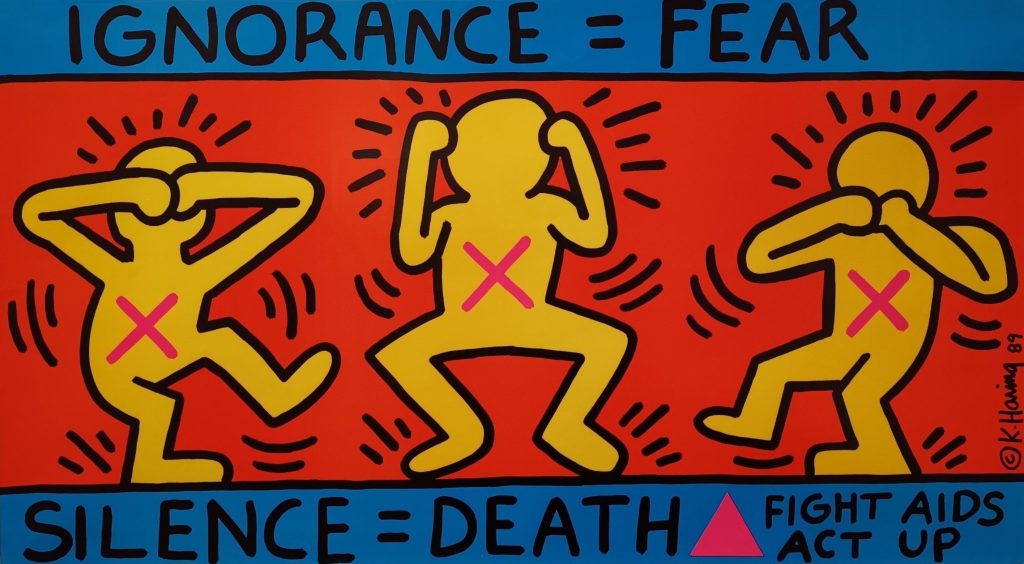
If you were around in the 1980s you may remember it was a decade of partying to the first music videos and tunes by Madonna, Grace Jones and Prince. The 80s also bring back memories to hip hop, fluorescent colours and graffiti. But it was also an era where people and artists took to the streets to protest against the nuclear arms race, nuclear energy and Apartheid. One of those artists was Keith Haring.
Haring believed that art should be for everyone and upon arriving in New York City, he recognized the city streets as legitimate spaces to show art. Between 1980 and 1985 for example, he created thousands of drawings in chalk on the blank black papers used to cover expired ads in the subway. These unsigned works and the public performance of their making turned haring into a media phenomenon. As his fame grew, his subway drawings were increasingly being taken by people and he decided to stop making them.
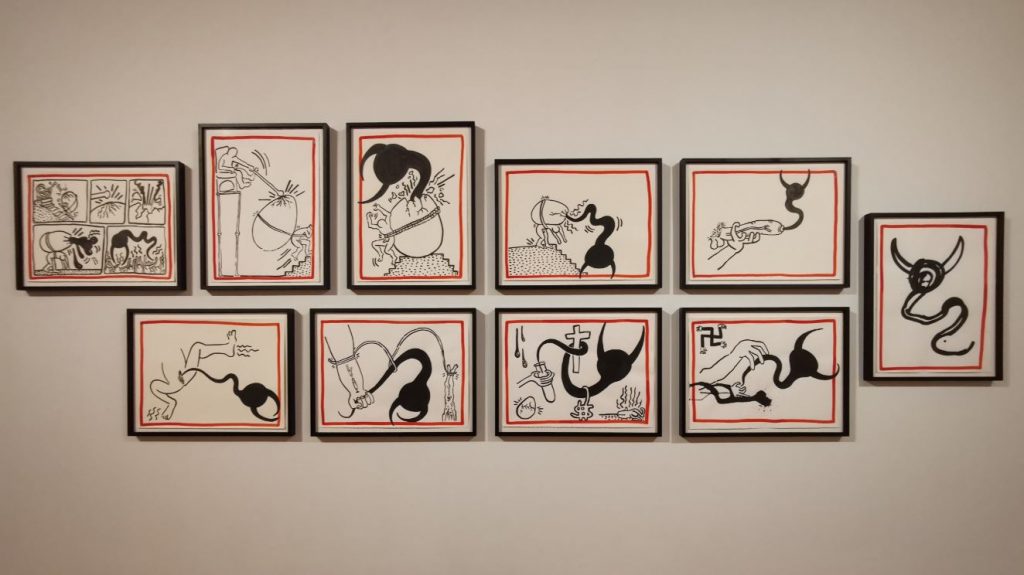
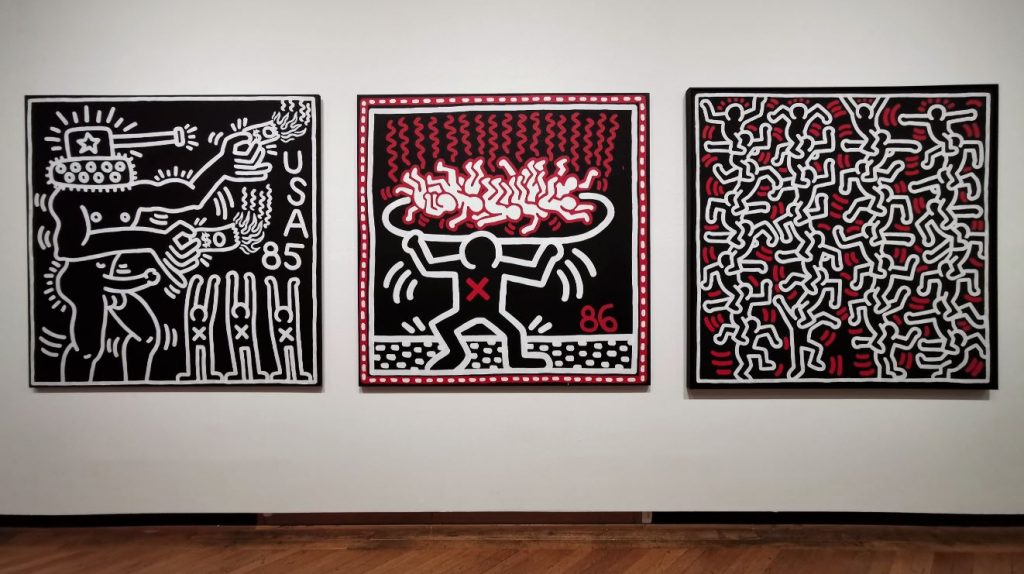
As Haring wanted to develop a broader interaction between the artist and the audience, he spoke of making works that embraced “music, performance, movement, concept and craft.” In fact the making of his paintings became something of a performance. At the peak of his mid-1980s fame, he exhibited internationally and a party atmosphere followed his public projects. He would play music while painting and journalists and crowds of locals would gather to watch him work. According to Haring “every day was like a block party.”
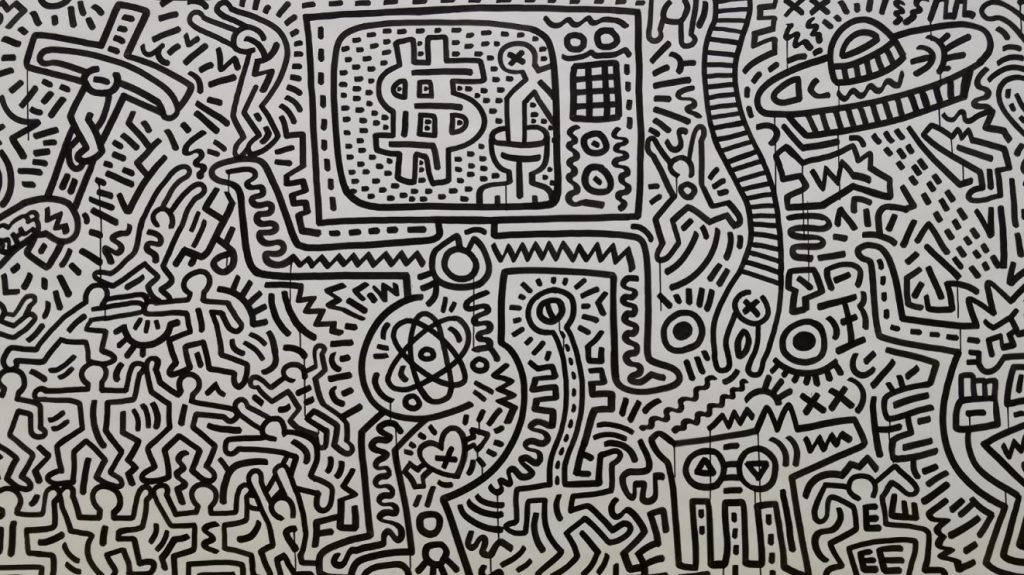
He would further extend his range through collaborations with fashion designers like Malcolm McLaren and Vivienne Westwood, and with a host of performers such as Grace Jones. Madonna, at the verge of her international breakthrough, performed Like a Virgin at one of Haring’s ‘Party of Life’ birthday parties.
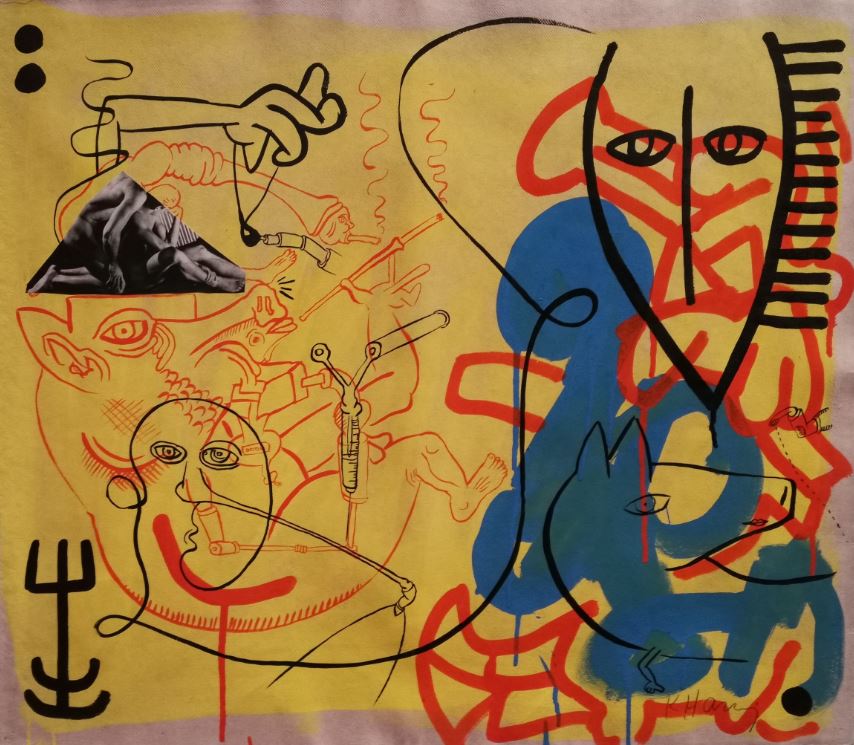
In 1986 Haring opened his Pop Shop in Lower Manhattan, New York. His work had become globally recognisable and the shop made his art and ideas accessible as affordable merchandise such as t-shirts, badges and posters.
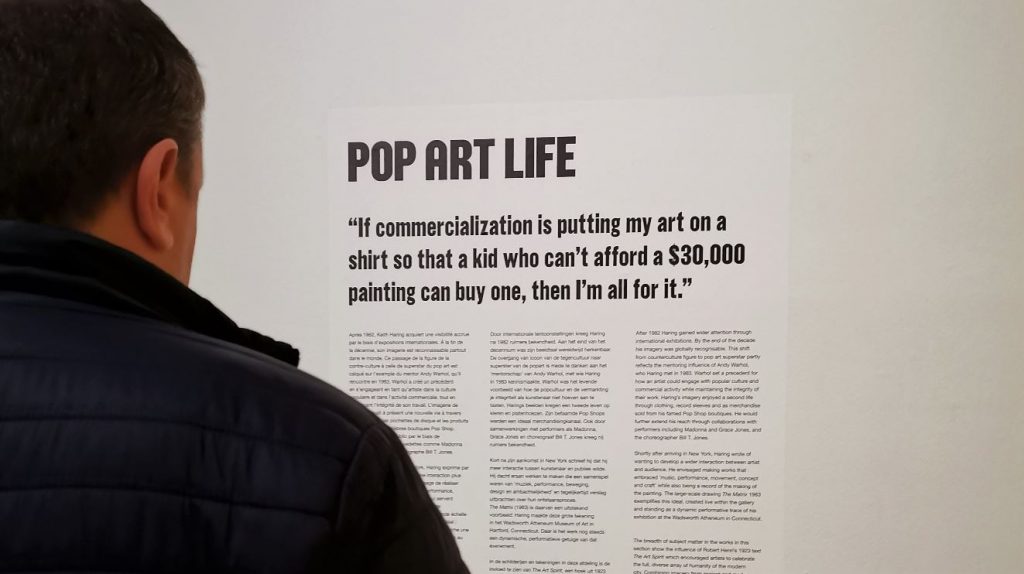
Keith Haring felt that the artist is “a spokesman for a society at any given point in history.” His paintings and drawings address topics such as racism, nuclear war, the excesses of capitalism and what he regarded as the misuse of religion for oppressive purposes. Making posters allowed him to take a more overtly activist stance. He not only designed them, but he also printed them at his own cost and distributed them at demonstrations.
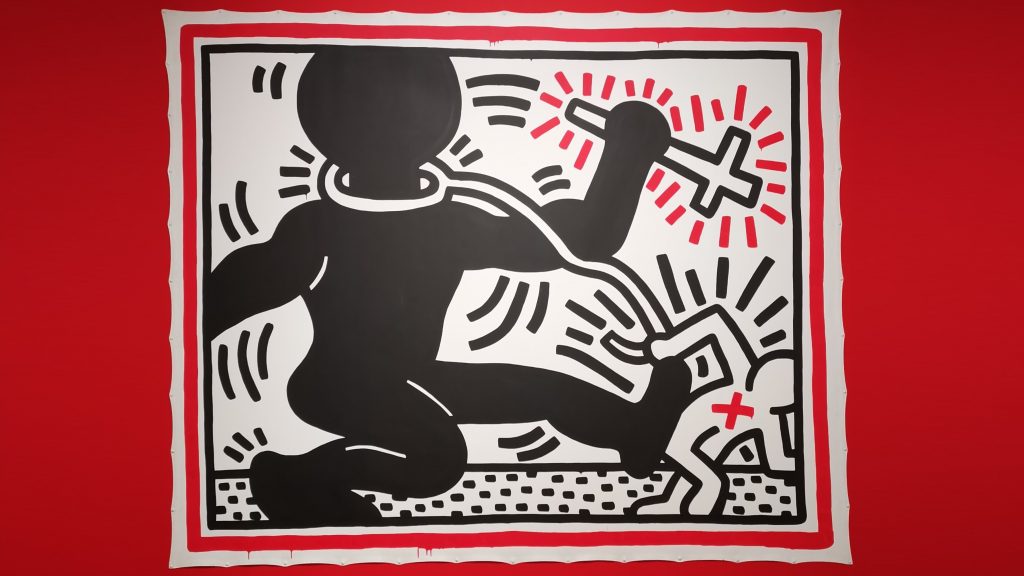
The pink triangle in Silence = Death from 1989 was adopted as a symbol of LGBTQ pride in the 1970s. It was reclaimed from Nazi Germany where it was used to identify gay and bisexual men, as well as trans women imprisoned in concentration camps. The triangle alongside the slogan “Silence = Death” quickly became one of the main images used by the activist group Act Up. Haring joined their forces and made a number of posters for them. He created many potent images which contributed to AIDS/HIV awareness, education and activism.
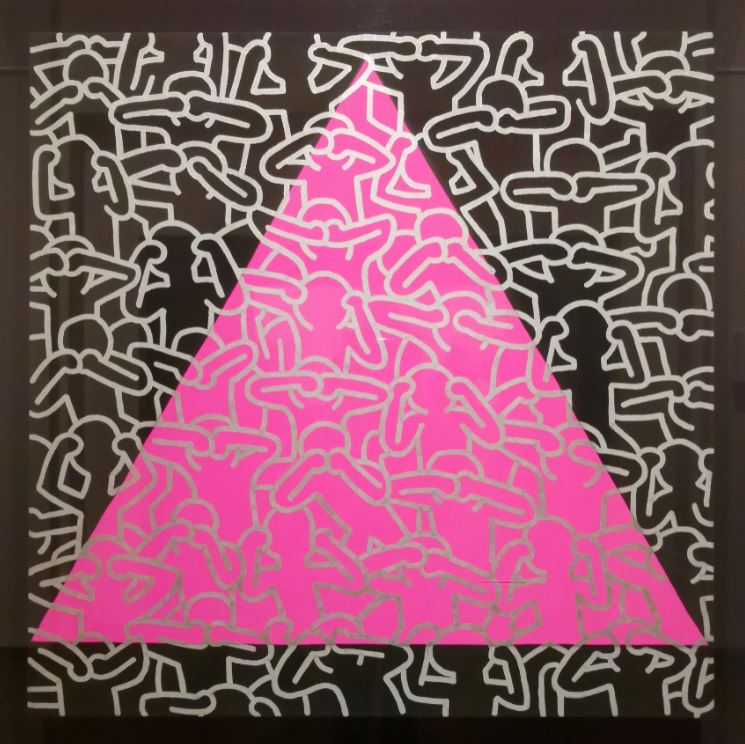
In 1987 Haring wrote: “I am quite aware of the chance that I have or will have AIDS. The odds are very great and, in fact, the symptoms already exist.” Realising that his time might be short, he established the Keith Haring Foundation (1989), which continues to support AIDS/HIV organisations and charities as well as marginalised young people.
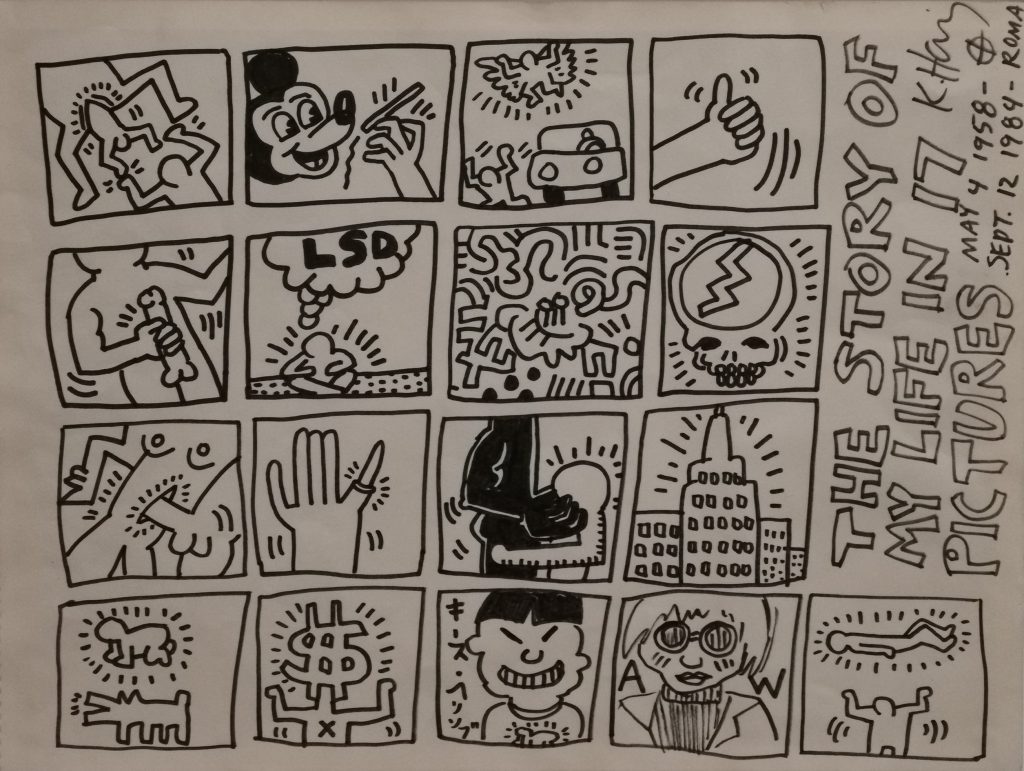
Keith Haring died on 16 February 1990 from AIDS-related complications. He was 31.
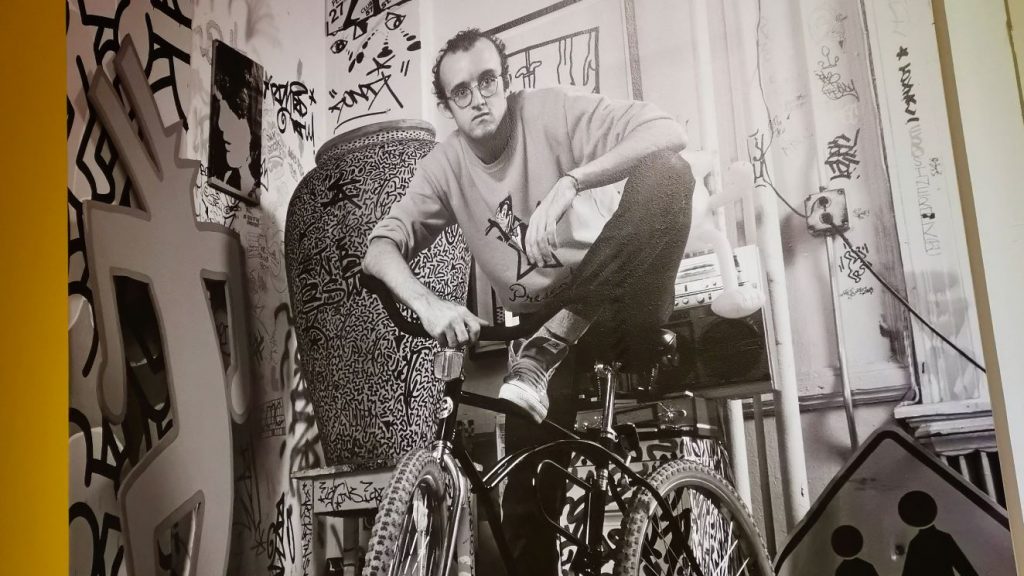
The Keith Haring retrospective at BOZAR, Brussels runs until 19 April 2020